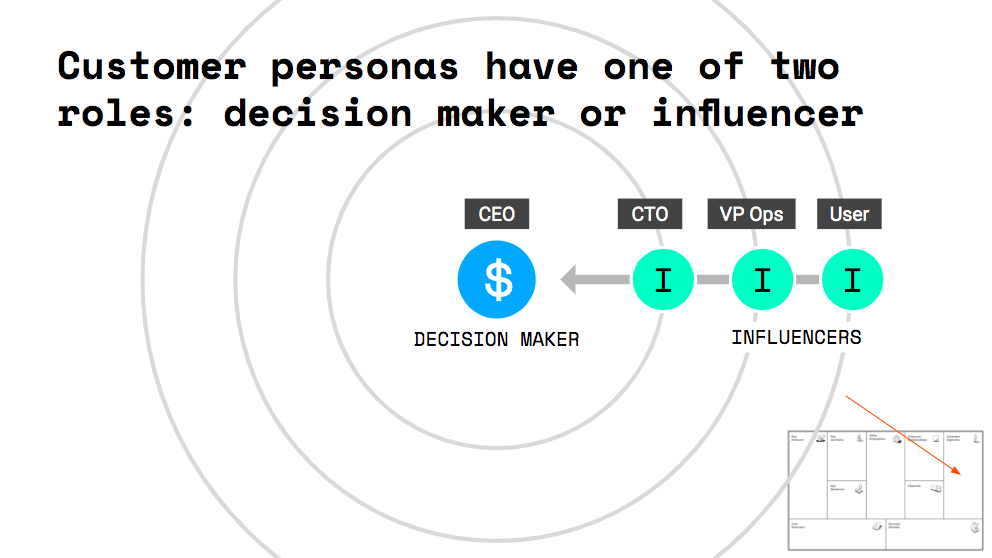Startup Library
3. Prioritize the people in the customer segment
A company doesn’t buy — individuals do
It is important to know and understand the individuals who are making or influencing the purchasing decisions for your solution. Customer segments don’t buy solutions — companies don’t buy solutions — but the individuals who work in the companies that make up your customer segment do. So it is important to “know” the people who will either influence or make the decision to work with you.
There are 2 things you can do to help you refine your understanding of the key people in your customer segments.
1. Create meaningful “personas” for the important “types” of people in your chosen customer segment
To get to “know” our potential customers better, we create “personas” or fictitious archetypes of of the typical people who buy or influence the buying decision for our product/service. (Personas help us dig down into the Customer Segment block of the business model canvas.)
Capture and share what you know on a one-pager
A “persona” description is usually a one page document that allows you to capture the archetype of a typical individual you might run into while trying to test or sell your offering.
With what you already know today, you can probably start building a pretty good shared picture of your most important stakeholders. With each interview with this persona type, you will likely be able to refine that picture. Why is this important? It helps you to connect your value proposition to the people who have a problem; it helps you to have a more refined understanding of the kinds of individuals you need to talk to help you target more and better interview candidates; it helps you to refine and target your sales and marketing messaging. And more!
There are many templates but the simplest version captures 6 key elements in order of importance during customer discovery:
- A picture and a name representing the persona
so you can put a face to the name and remember it is a person. We usually use alliterations to help more easily remember the name eg. IT Ian, CFO Susan, CMO Martie, etc.) - The main motivation for this persona
What is the one thing above all others that this person cares about? - The jobs-to-be-done
This could be the actual role in the company like “keep the books”, but could also be something less tangible like “keep the harmony”. - The top 5 search keywords/phrases
This is important because it makes you think about the words your persona would use if they were searching for a solution for the problem you want to solve. It puts you in their head! - Demographic/story
We put this one last because people tend to get hung up on this with questions like “Is our persona in their 30’s or 50’s?”. What matters is if demographic characteristics are important, that you capture them. eg. If the “age” of your persona type is important because it will impact how you interact with them in terms of the nature of the approach, by all means put it down! - Buyer Type
This is last because it is a block more interesting once you have validated your business idea and you are starting to sell (not if they want to buy, but how they eventually want to buy). But again, if during your customer discovery interviews, you learn something about the persona buyer preferences, them jot them down.
There are always multiple “persona” types in any customer segment – B2B or B2C
Both for B2B or B2C, for any customer buying decisions, there are always multiple individuals involved in the buying decision – acting as either decision maker or influencer. So building one “persona” type is never enough!
During (and after!) customer discovery, you will want to understand the importance and needs of the different important “persona” types by talking to a many of the different types as possible. Capture and share what you learn in “persona” templates to ensure that your entire team is aligned on the characteristics of the key people “types” in your segment.
2. Map out your “personas” in order of importance
It is not enough to just know who you care about, but you also want to pay attention to how much you need to care about what each persona thinks.
We recommend that after you identify all of the most important “persona” types that you map them in a way that you can visually see their relative importance — the less important personas being positioned further away from the center in the circle of influence. We call this the persona map.
Create a persona map template to understand the importance of the different individuals at play in your customer segment.
Author: Jane Somerville


